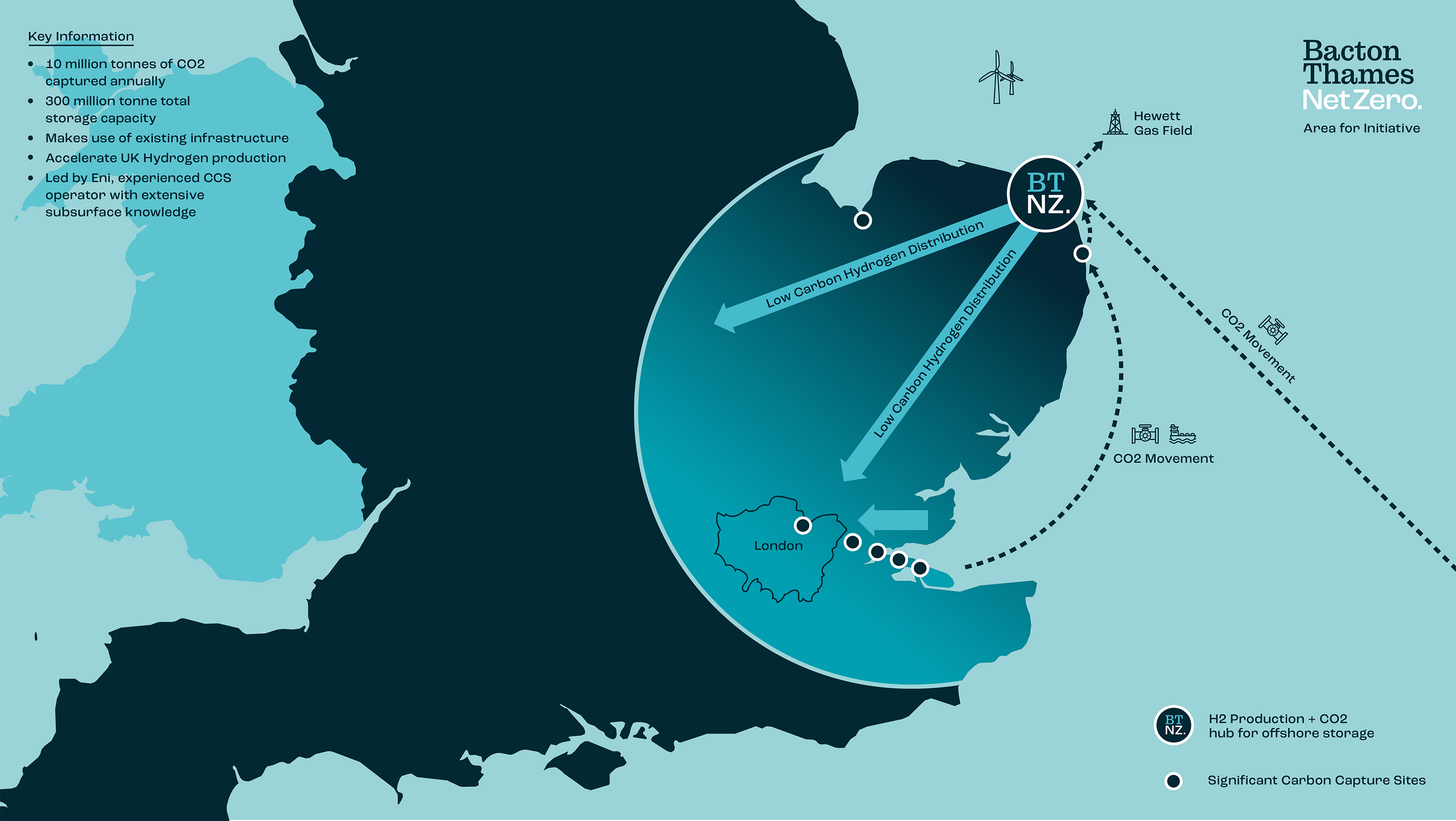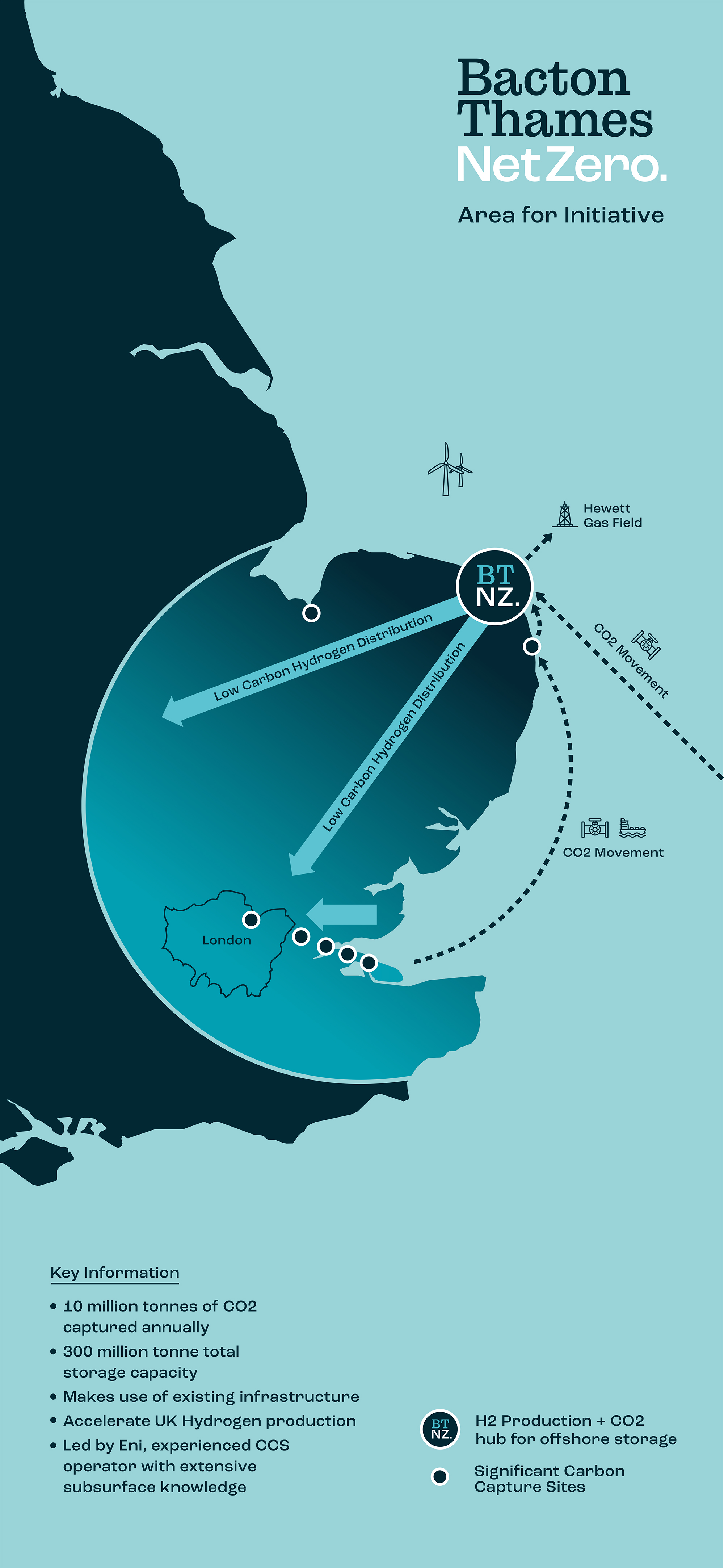The primary aims are to:
- Decarbonise and to unlock new greener growth opportunities for the automotive, ceramics, food, materials, energy and waste disposal sectors.
- Target existing and planned carbon emission sources close to Bacton and in the London/Thames estuary area, from which captured carbon can transported to be permanently stored within the Hewett depleted gas field.
- Use interconnecting pipelines between Bacton and Zeebrugge to store both domestic and international carbon dioxide and transport locally-produced Hydrogen.
- Identify regional synergies and opportunities for decarbonisation anchored around the Hewett depleted gas field for use as a site for permanent CO2 storage.
- Support the UK’s energy transition strategy, which is targeting capturing 20-30 million tonnes of carbon dioxide per year across the UK by 2030.




